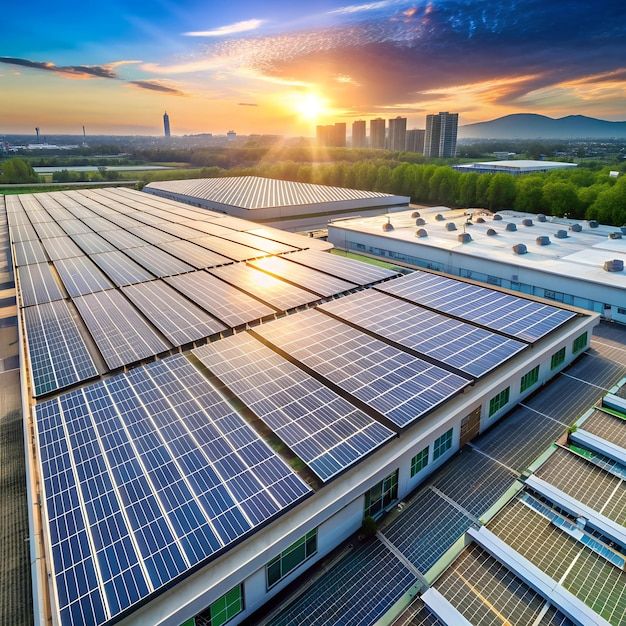Installing a solar panel system is a complex process that involves electrical work, precise mounting, and coordination between multiple components. Even with careful planning, installers may encounter challenges that can delay the project or affect system performance. Understanding common issues and troubleshooting Solar Panel Installation Derby techniques ensures the installation proceeds smoothly and that the system operates efficiently from day one.
1. Improper Roof Assessment
A common early issue is an inaccurate evaluation of the roof:
-
Symptoms: Panels may not fit properly, shading may occur, or roof load capacity is exceeded.
-
Troubleshooting: Reassess roof structure, verify measurements, and ensure the chosen mounting system is compatible. Reinforce roof areas if necessary.
Proper planning at the assessment stage prevents downstream installation problems.
2. Shading Problems
Shadows from trees, chimneys, or nearby buildings can significantly reduce energy output:
-
Symptoms: Uneven panel performance, lower than expected energy production.
-
Troubleshooting: Adjust panel layout, trim trees, or consider microinverters or power optimizers to mitigate shading effects.
Proactive shading analysis during design can avoid costly adjustments later.
3. Electrical Wiring Errors
Electrical mistakes are common and can affect system performance or safety:
-
Symptoms: Inverters not powering up, blown fuses, or voltage inconsistencies.
-
Troubleshooting: Double-check all wiring connections, ensure proper polarity, verify cable ratings, and inspect for damaged insulation. Use a multimeter to confirm continuity and voltage levels.
Following manufacturer wiring diagrams and NEC guidelines is essential to prevent these issues.
4. Mounting and Alignment Issues
Incorrect panel placement can affect both energy production and roof integrity:
-
Symptoms: Panels tilted incorrectly, uneven rows, loose mounts, or leaks around penetrations.
-
Troubleshooting: Adjust tilt and orientation, tighten mounting hardware, and reseal roof penetrations with appropriate flashing and sealant. Ensure mounts are anchored to rafters or structural supports.
Careful alignment ensures optimal sunlight capture and long-term stability.
5. Inverter Malfunctions
Inverters are critical for converting DC to AC power, and issues here can halt energy production:
-
Symptoms: No output, error codes, or frequent shutdowns.
-
Troubleshooting: Check inverter connections, verify grid compatibility, inspect for tripped breakers, and consult the manufacturer’s troubleshooting guide. Ensure proper ventilation to prevent overheating.
Regular inverter inspection during installation avoids post-activation problems.
6. Monitoring and Communication Failures
Modern systems often include monitoring platforms to track performance, which can experience glitches:
-
Symptoms: Inaccurate readings, missing data, or connectivity issues.
-
Troubleshooting: Verify network connections, ensure monitoring devices are powered, and update firmware if necessary. Reboot or reset equipment according to manufacturer instructions.
Reliable monitoring ensures homeowners can track energy production effectively.
7. Component Damage During Handling
Solar panels and connectors are fragile and can be damaged if mishandled:
-
Symptoms: Cracked glass, scratched surfaces, or bent frames.
-
Troubleshooting: Inspect panels before installation, replace any damaged units, and use proper lifting techniques and protective materials during transport and installation.
Preventive handling is the best solution to avoid costly component replacement.
8. Grounding and Bonding Issues
Improper grounding poses safety hazards and can interfere with system operation:
-
Symptoms: Tripped breakers, electrical shocks, or system faults.
-
Troubleshooting: Ensure all panels, racking, and electrical components are properly grounded and bonded according to NEC standards. Inspect grounding rods, wires, and connections thoroughly.
Safety and compliance depend on correct grounding procedures.
Conclusion
Solar panel installation can encounter a variety of challenges, from shading and electrical wiring issues to mounting and inverter problems. Effective troubleshooting requires careful observation, adherence to manufacturer instructions, and compliance with electrical and building codes. By addressing these common issues promptly and methodically, installers can ensure a safe, efficient, and high-performing solar energy system, providing long-term reliability and maximum energy savings for homeowners.

